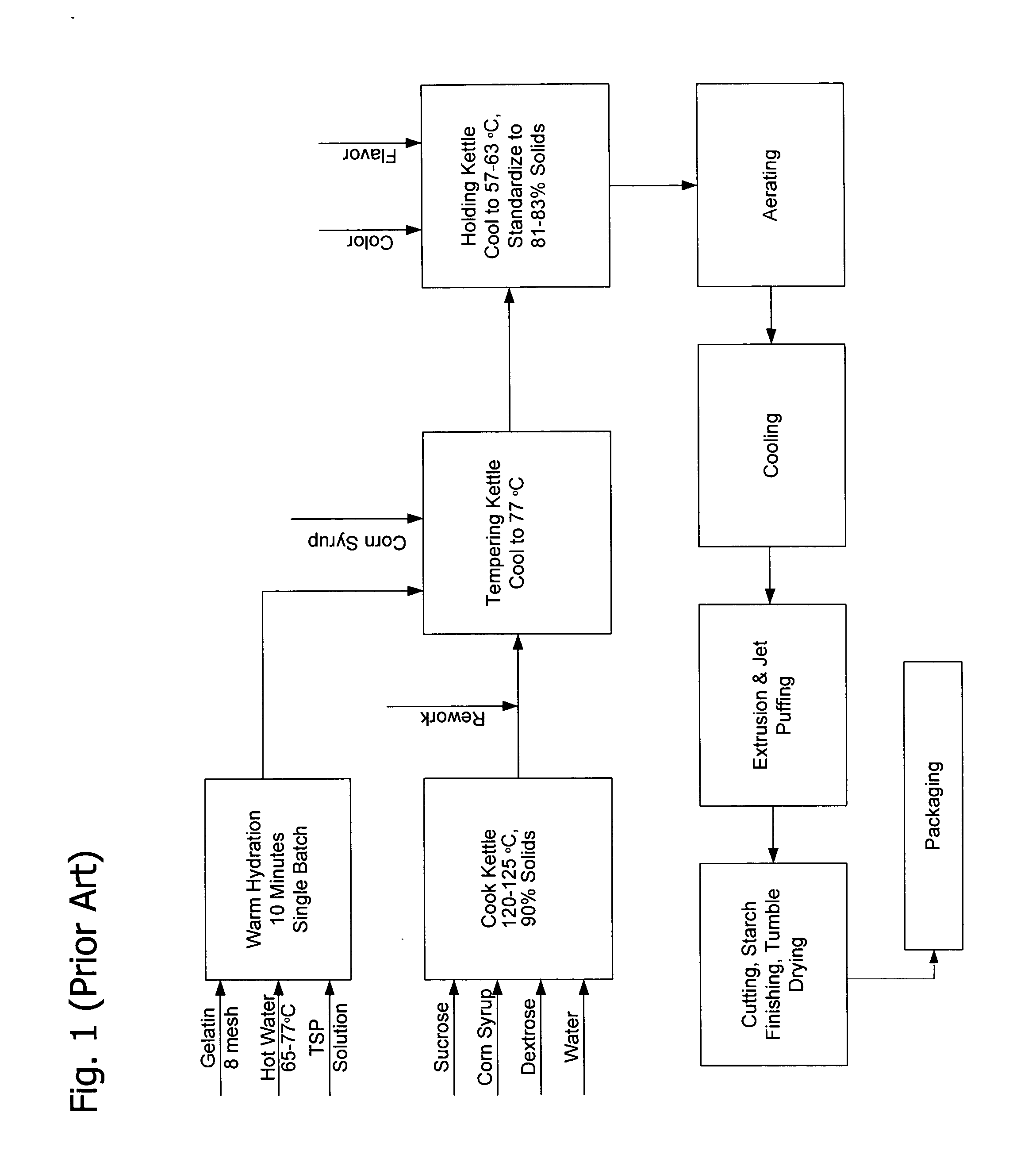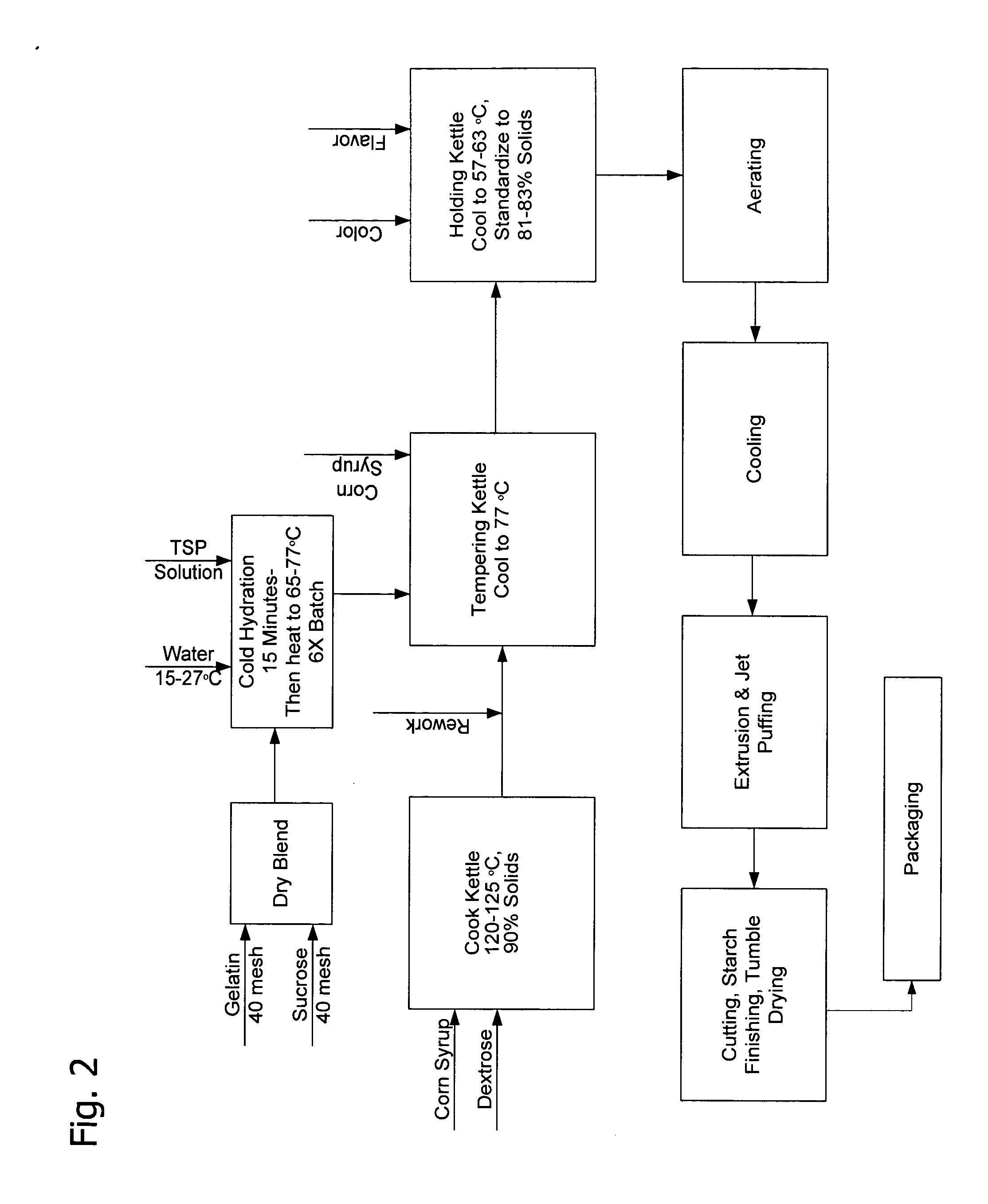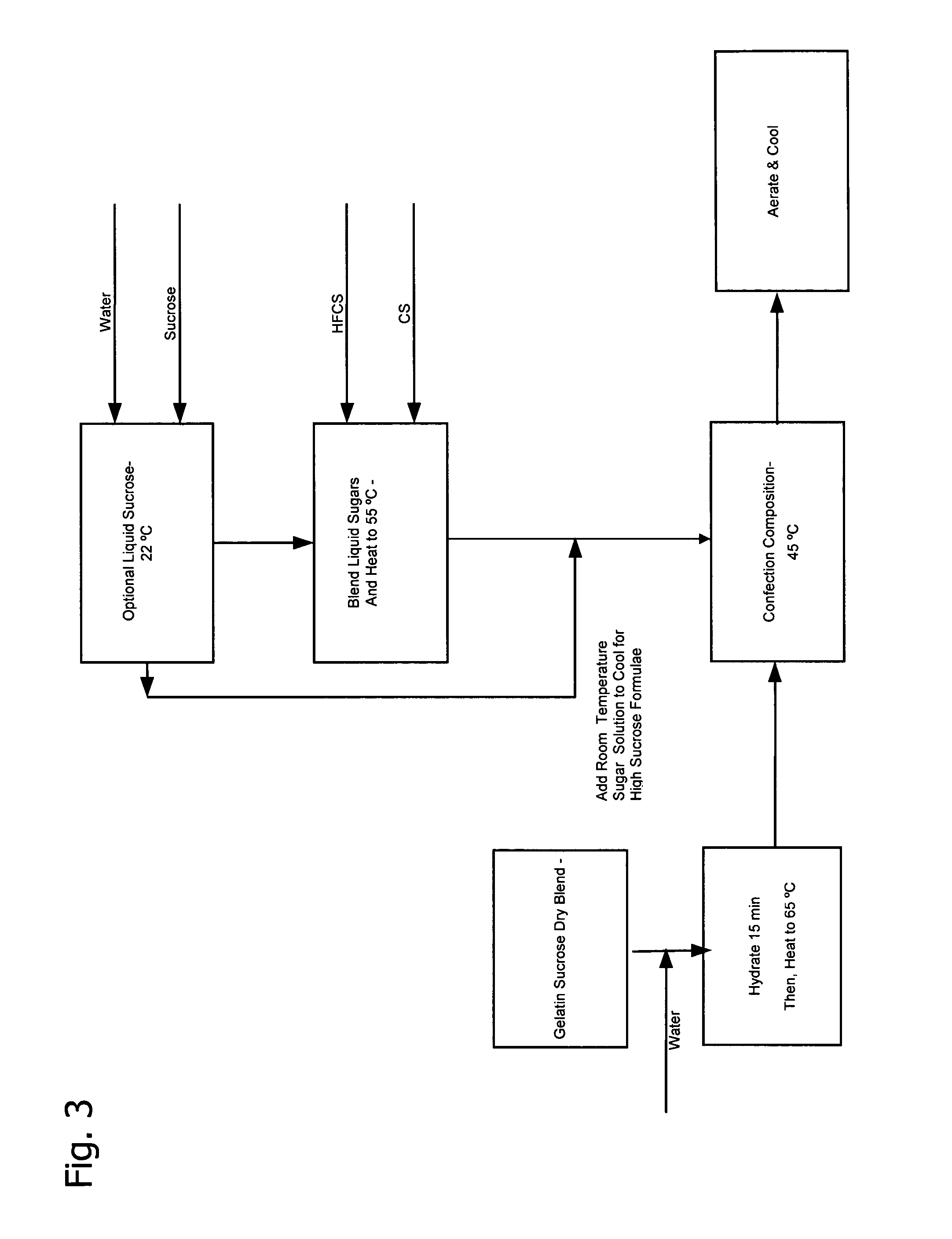Process for manufacture of aerated confections with dry blend of sugar and gelatin
a technology of gelatin and aerated confections, which is applied in the field of process for manufacturing aerated confections with dry blend of sugar and gelatin, can solve the problems of difficult dispersibility, slow hydratation, and difficult dispersibility of gelatin used in confections, and achieves the effects of less added water, good string, and high moisture conten
- Summary
- Abstract
- Description
- Claims
- Application Information
AI Technical Summary
Benefits of technology
Problems solved by technology
Method used
Image
Examples
example 1
[0042] This example describes the preparation of marshmallow cookie filler by an exemplary prior art process as will be improved by the process of the invention as illustrated in FIG. 3. Sugar, water, gelatin, high fructose corn syrup and 62 DE corn syrup are processed as follows:
[0043] A 200 g batch of liquid sucrose is prepared by weighing 134 g sucrose and mixing with 66 g of water. The mixture is heated to 65° C. to achieve full dissolution of the sugar, and the resulting sugar solution is then cooled to about 22° C.
[0044] Separately, a slurry of 6.9 g gelatin in 37 g of water is prepared and heated to 55° C.
[0045] A blend is made of 79 g of the above liquid sucrose, 76 g of HFCS, and 100 g of 62 DE corn syrup, and this blend is heated to about 55° C. to.
[0046] All of the gelatin slurry made above is added to the sugar solution blend.
[0047] The resulting mixture of gelatin and sugar solution is then cooled to about 45° C. by the addition of 121 grams of the cooled liquid su...
example 2
[0049] The same ingredients, in the same proportions are utilized in this example, as in Example 1, to provide a product according to the invention in the manner shown in FIG. 3. This example employs an 80:20 sugar:gelatin blend in the gelatin hydration step.
[0050] A 200 g batch of liquid sucrose is prepared by weighing 134 g sucrose and mixing with 66 g of water. The mixture is heated to 65° C. to achieve full dissolution of the sugar, and the resulting sugar solution is then cooled to about 22° C.
[0051] Separately, a gelatin and sugar solution is prepared by adding 16.75 g of room temperature water (about 25° C.) to a dry blend of 27.6 g sugar and 6.9 g gelatin, and hydrating for 15 min before heating to 55° C. The gelatin and sucrose are both about 40 mesh.
[0052] A sugar blend is made from 79 g of liquid sucrose, 76 g of HFCS, and 100 g of 62 DE corn syrup. This sugar blend is then heated to 55° C.
[0053] The sugar-gelatin solution is then added to the sugar blend, and this mi...
example 3
[0055] The same ingredients, in the same proportions, are utilized in this example, as in Example 1, to provide a product according to the invention. This example employs a 95:5 sugar:gelatin blend in the gelatin hydration step.
[0056] A gelatin and sugar solution is prepared by adding 66 g of room temperature water (about 25° C.) to a dry blend of 134 g sucrose and 6.9 g gelatin, and hydrating for 15 min before heating to 55° C. The gelatin and sucrose are both about 40 mesh.
[0057] A sugar blend is made by combining 76g of high fructose corn syrup and 100 g of 62 DE corn syrup. This sugar blend is then heated to 55° C.
[0058] The sugar and gelatin solution is then added to the sugar blend, and this mixture is cooled to 45° C., to obtain a liquid confection blend.
[0059] This liquid confection blend is then aerated by mixing as in Example 1.
PUM
 Login to View More
Login to View More Abstract
Description
Claims
Application Information
 Login to View More
Login to View More - R&D
- Intellectual Property
- Life Sciences
- Materials
- Tech Scout
- Unparalleled Data Quality
- Higher Quality Content
- 60% Fewer Hallucinations
Browse by: Latest US Patents, China's latest patents, Technical Efficacy Thesaurus, Application Domain, Technology Topic, Popular Technical Reports.
© 2025 PatSnap. All rights reserved.Legal|Privacy policy|Modern Slavery Act Transparency Statement|Sitemap|About US| Contact US: help@patsnap.com



